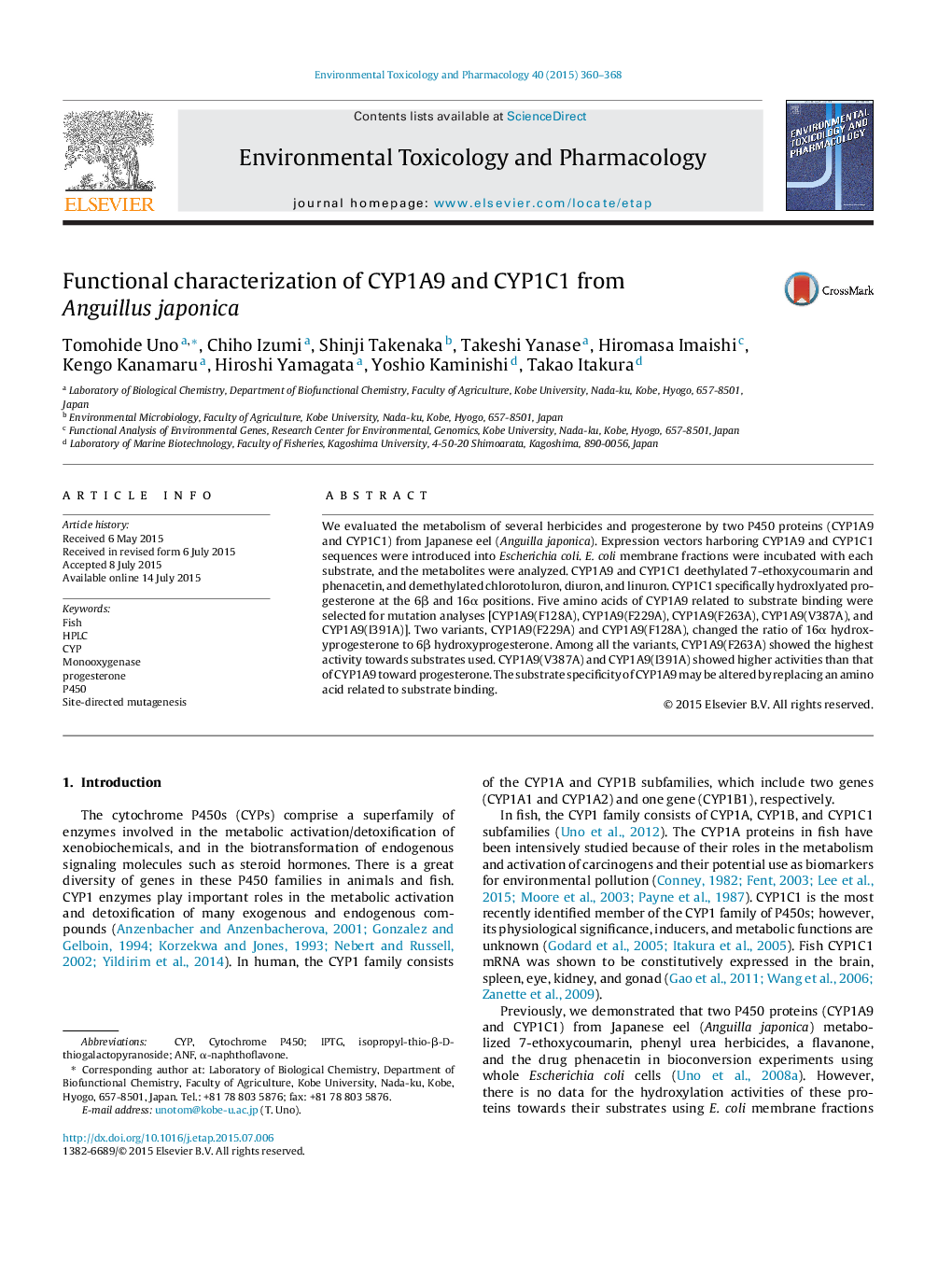| کد مقاله | کد نشریه | سال انتشار | مقاله انگلیسی | نسخه تمام متن |
|---|---|---|---|---|
| 2582905 | 1130675 | 2015 | 9 صفحه PDF | دانلود رایگان |

• Two P450 sequences from Japanese eel were expressed in Escherichia coli.
• The expressed proteins demethylated or deethylated several herbicides.
• CYP1C1 showed strong hydroxylation activity towards steroid hormones.
• Mutational analyses were conducted to evaluate the substrate specificity of CYP1A9.
• These mutants change substrate specificity for steroid hormone.
We evaluated the metabolism of several herbicides and progesterone by two P450 proteins (CYP1A9 and CYP1C1) from Japanese eel (Anguilla japonica). Expression vectors harboring CYP1A9 and CYP1C1 sequences were introduced into Escherichia coli. E. coli membrane fractions were incubated with each substrate, and the metabolites were analyzed. CYP1A9 and CYP1C1 deethylated 7-ethoxycoumarin and phenacetin, and demethylated chlorotoluron, diuron, and linuron. CYP1C1 specifically hydroxlyated progesterone at the 6β and 16α positions. Five amino acids of CYP1A9 related to substrate binding were selected for mutation analyses [CYP1A9(F128A), CYP1A9(F229A), CYP1A9(F263A), CYP1A9(V387A), and CYP1A9(I391A)]. Two variants, CYP1A9(F229A) and CYP1A9(F128A), changed the ratio of 16α hydroxyprogesterone to 6β hydroxyprogesterone. Among all the variants, CYP1A9(F263A) showed the highest activity towards substrates used. CYP1A9(V387A) and CYP1A9(I391A) showed higher activities than that of CYP1A9 toward progesterone. The substrate specificity of CYP1A9 may be altered by replacing an amino acid related to substrate binding.
Journal: Environmental Toxicology and Pharmacology - Volume 40, Issue 2, September 2015, Pages 360–368